If you’re a business owner or a freelancer, chances are you’ll eventually think about creating your own blog. But what’s the benefit of creating your own professional looking blog?
Well, a successful blog can do a lot for you:

Help you establish an authority in your field: A blog that offers great insights can help you position yourself as an expert in your field. Customers and clients are more likely to choose and trust people who have more expertise in the industry.
Help you get discovered: Every blog post you create, is one more indexed page on your website, which means it’s one more opportunity for you to get discovered by people that don’t know you yet. A blog post can also be shared via Twitter, LinkedIn, Facebook and Pinterest, which can drive traffic to your website.
Help convert leads: Customers and clients go straight to your blog to learn about your brand, and to determine whether they should buy your products. The best blog posts have call-to-action buttons that can quickly turn readers into customers.

That all sounds great, but you’re likely wondering how to create an amazing blog—especially if you’ve never attempted to do so before. Thankfully you’re not alone! Here, you’ll find everything you need to know about designing a blog that’s right for you and your business.
Step 1: Buy a domain and get hosting
—
You’ll need a .com domain name and a hosting service to get an instant credibility boost for your website.
A .com domain name costs around $12 and you’ll need to pay about $100 (or cheaper) per year to get good hosting. It’s a dang good investment that could help you grow your brand to four, five or more figures down the line.

You can register your domain and setup your website using Namecheap hosting or SiteGround.
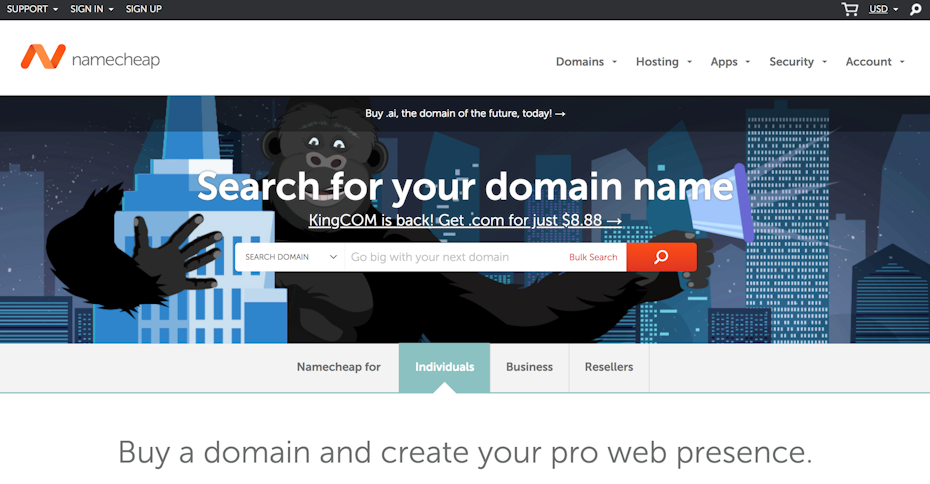
Remember to give your domain name some proper thought and make sure to pick one that’s appealing to your audience, expresses what your blog is about and that can be made into a great logo.
Step 2: Decide how you want to build your blog
—
For building your blog you’ve got a few different options: using a freelance web designer and developer, an agency or a website builder.
If you’re looking for the perfect, unique blog design, you’re going to want to leave the design part to a professional designer. Simply look through portfolios and find a web designer with the right style and experience to create an amazing web design for your blog. Once you’ve got the perfect web design, you’ll need a web developer to make your blog a reality.
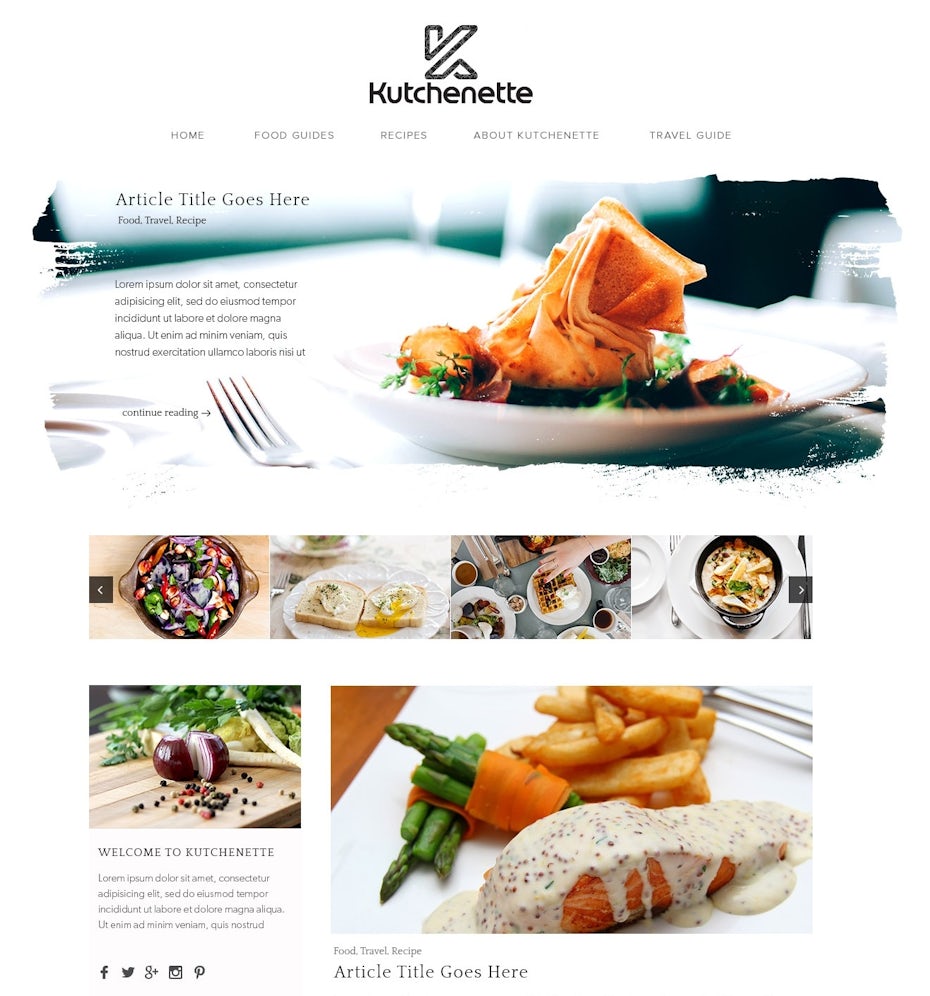
Another option is hiring an agency to develop, design and set up your blog for you. Both of the above options pretty much guarantee that you will end up with a blog that has exactly the features and look you wanted, but you’ll have to be willing to pay more if you want this level of quality.
However, if you are on a budget, you can pick a site builder for your blog. Site builders use temples, which you can customize—more or less, depending on the template—and fill with your own content. You can do it yourself, but you’ll have to work within the restrictions of the templates. Here are some of the most popular options you can try:
WIX
If you want to create a website fast, then use Wix. It has basic drag-and-drop features that can help you put your blog together.
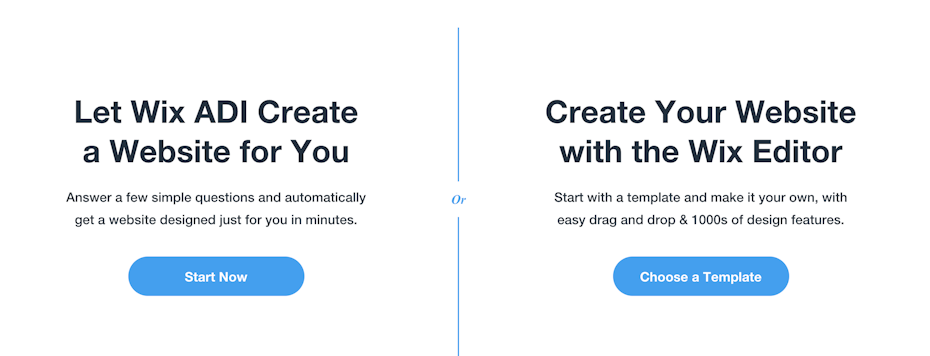
You’ll have the option to create your website with the Wix Editor or the Wix ADI (Artificial Design Intelligence).
If you use the Wix Editor, you’ll start with a customizable template.

If you choose Wix ADI you’ll answer a few questions and get the site automatically made for you. I used ADI to create my blog Bucket List Adventures. It works!

Here’s my blog after the Wix ADI gathered my info and prepared a design.
Squarespace
Maybe you want to create a blog with a visually impressive template? Squarespace might be for you.
It’s not as easy to use as Wix. But you can easily “drag and drop” your way into creating a blog that looks professional.
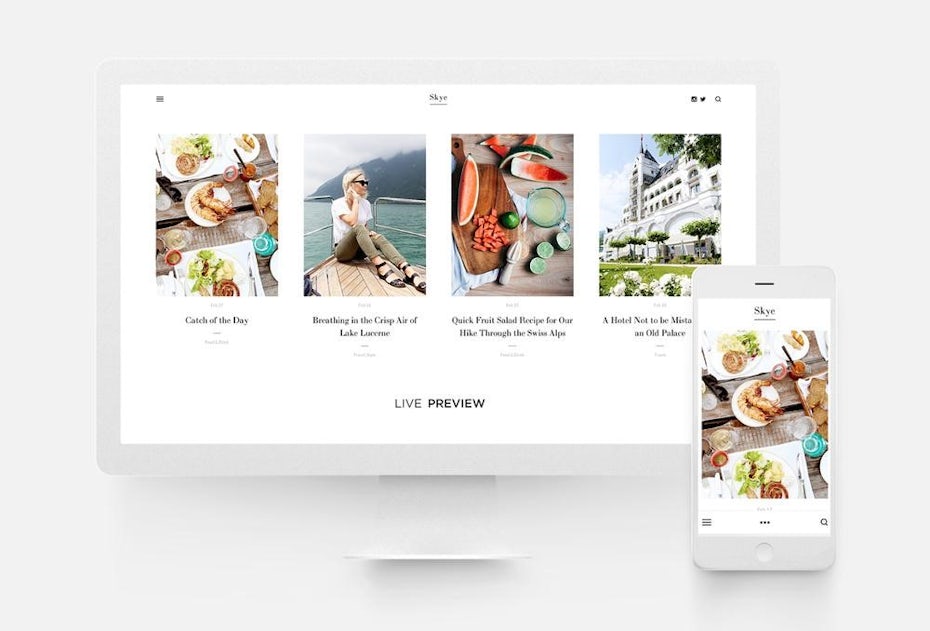
You can try Squarespace with a 30-day trial. When the trial period ends and you opt to use their service, you’ll pay $12 or more, depending on the plan you choose.
WordPress
If you want a lot of customization and are willing to put in some serious time to learn how things work, WordPress is a good option.
First, head over to the WordPress website to download it to get started.

Once you get your site up and running, you’ll need to find a professional-looking theme.
There are lots of WordPress blog themes you can use if you’re on a budget. Check out this list.
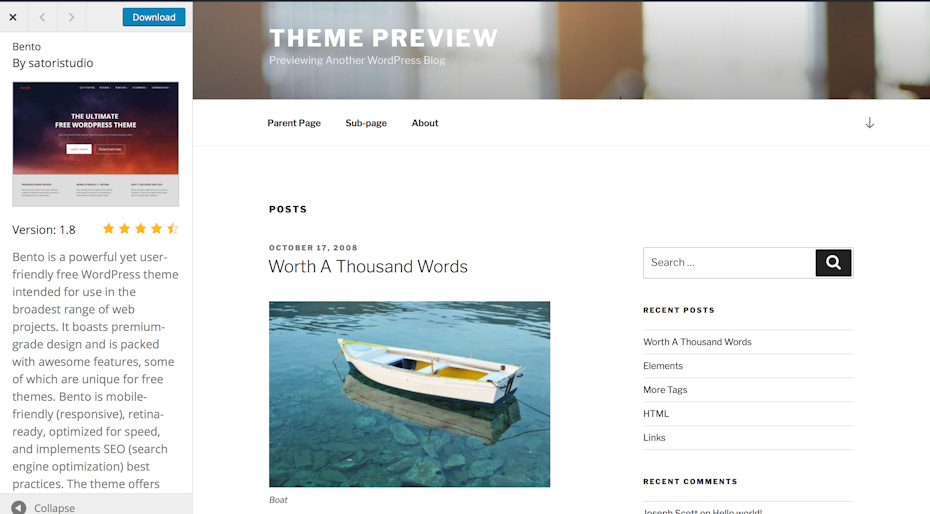
All of the above options for building your blog have their pros and cons, so figure out which option will give you the result you’re looking for and pick the one that fits your needs.
Step 3: Create a professional-looking layout
—
Once you’ve decided how you want to build your blog, the next step is to pick a clean and inviting layout that engages your audience.
The ideal layout shouldn’t pull viewers’ attention away from the content. Instead, it should neatly display your content and draw readers in. You want to take your readers on a journey and show them content that makes them want to keep reading. Engaging images combined with easily readable text as well as clear structure will do that for you. The right balance between images and text as well as whitespace plays a huge role in a successful layout.
Here are some examples of blogs with great designs to inspire you:

Help Scout proves that simplicity is beauty.
At the top, it has a banner that features the most popular or recent entry. The icons for each article use bright block colors that have a similar style. It also uses the same fonts for headlines and categories. Altogether, these elements make the blog seamless and cohesive.
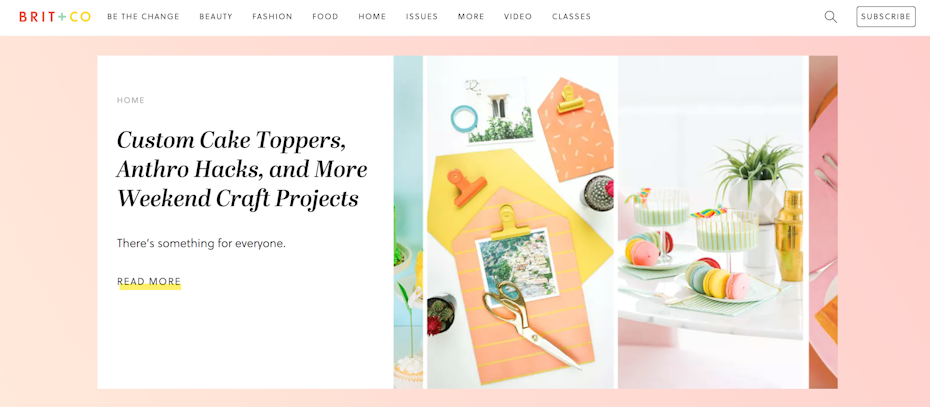
The header image of Brit + Co is notably eye catching. The bold colors, clean layout and minimalist design help the posts appear extremely organized.
We love the brand consistency in the images too. Check out the vibrant colors of the articles about hoop earrings, spring style and smoothies, which echo the brand’s visual style and distinct art direction.

Fubiz is a website in the art and design niche. It breaks its content into several noticeable sections. Near the top of the blog’s homepage, readers can find the header image of the most popular article. “The Highlights” “Latest News” and “More News” options include thumbnail images for each post.
There is also a “Creativity Finder” that enables readers to filter the content based on their location (i.e. Paris, Tokyo), occupation (i.e. student, architect) and type of content (i.e. video, graphic).
Step 4: Find awesome font combinations
—
The ideal font combinations are stylish, professional and sleek. They shouldn’t distract from the content.
You can decide on the right font pairings for your blog by checking out Google Fonts, Fonts In Use and Canva Font Combinations. Read our article on font pairing for more information.
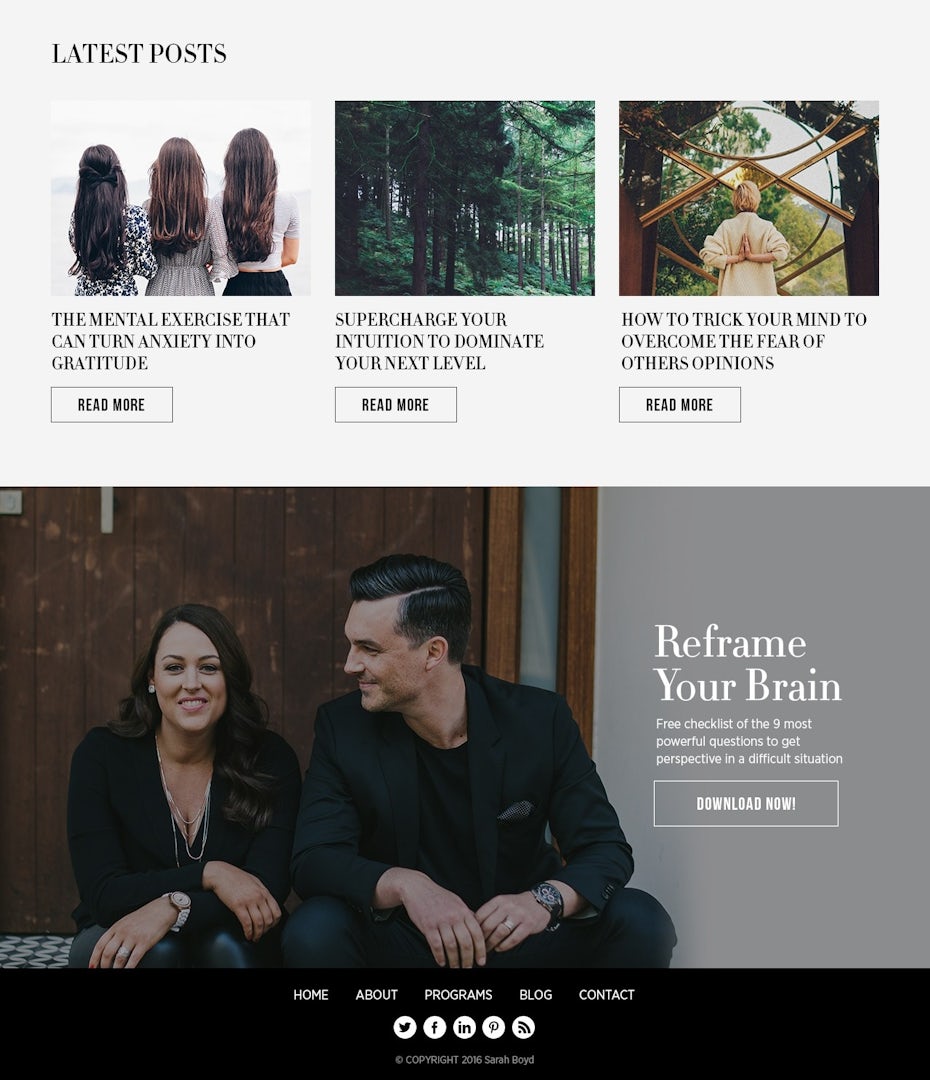
If you don’t have a design background, here are a few rules to keep in mind:
Choose the font type
Serif fonts are the classic, elegant choice while sans-serif fonts are usually more clean and modern. Or perhaps a script or display font is more your style? Learn all about the different types of fonts and how to use them.
Stick to a few fonts
Mixing too many different fonts can make you blog look inconsistent. Choose two to three fonts at most for a coherent, harmonious look. Also, try to pick web-safe fonts to speed up load times.
Make your text readable
The font pairings you select won’t matter if people have a hard time reading them. Consider the size, stroke, weight, color and space of the text to make sure it’s easy to read.
Step 5: Find your colors and stick to them
—
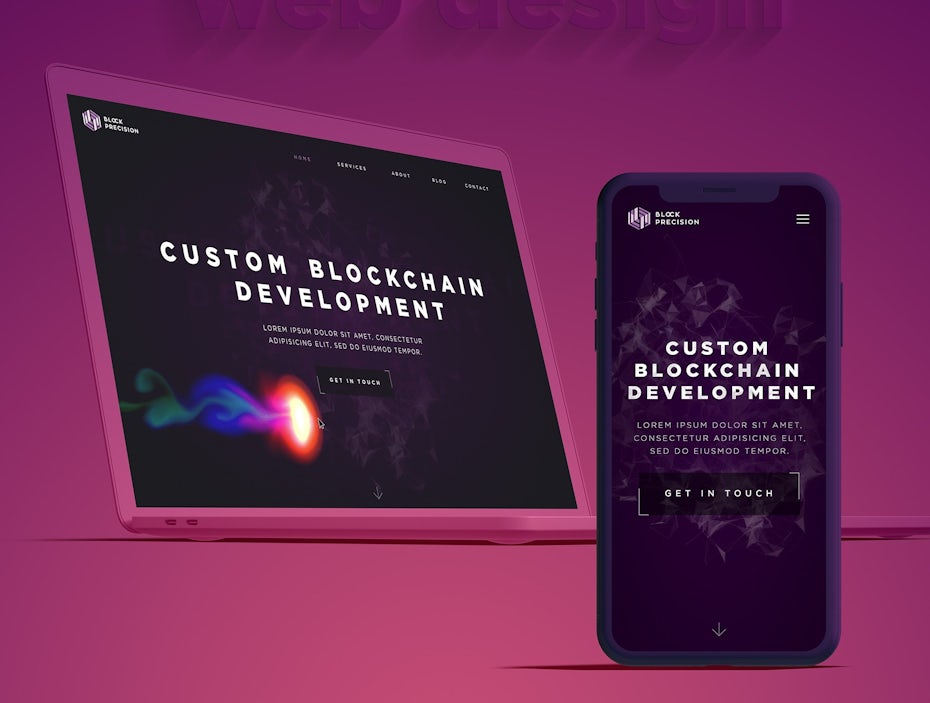
Color is an extremely effective design element that can impact the thoughts, perceptions and conversion rates of your brand (according to Hubspot, 80% of consumers believe that color improves their recognition of a brand). To benefit from an optimal branding effect, stick to a consistent color selection throughout all your business collateral—including your blog.
If you don’t have any brand colors yet, you’re probably asking yourself what colors will help skyrocket your business to success. Color psychology will help you figure it out! Color says a lot about your brand, so be aware of color meanings and pick a combination that works with your brand’s style and personality.

If you want to explore possible color combinations, view some of Pantone’s suggested color combinations on their Color of the Year 2018 page. You can also check out Google’s Material Design guidelines and visit sites like Material Design Palette and MaterialUI to help choose your website’s color scheme.
A good tip is to choose three or less core colors for your brand.
Step 6: Ramp up your responsive web design
—

Today most people are looking at your blog through mobile devices. In fact, 57% of traffic is now from smartphones and tablets, as opposed to desktops. That means your web design should be responsive when viewed on a smartphone or laptop. If you don’t know how to create a responsive site, then work with a web designer. Don’t forget to perform cross-device and cross-browser tests before your blog goes live. This way, visitors will have a great experience no matter how they view your website.
Step 7: Speed up your load times
—
Prioritizing design over usability and page speed is a common newbie blogging mistake.
A study found that site visitors expect sites to load by 2 seconds. This means your posts won’t get read if images take more than 20 seconds to load. Instead, they’ll press the back button. To check your site’s loading times you can use Google PageSpeed Insights. PageSpeed Insights also provides concrete suggestions on how to fix your site’s speed. All you need to do is click the Show how to fix link button.
Another tip is to keep your design simple. No one wants a website with an overwhelming amount of elements. If your competitors use tons of pop-ups, widgets, ads and other inessential features, you don’t have to use them too. Focus on simplicity and include buttons and features that matter.
Ready to get started?
—
It might take some time to create a blog with a captivating design, but it will be well worth the effort. A great design will help drive traffic and attract potential customers to your business.
Spend some time developing your brand’s aesthetic—choose the best fonts and colors that represent your brand’s personality. And, make sure that your blog is fast and responsive on mobile devices. Your readers will thank you for it.
About the author
Monique Danao is a writer and content creator with an expertise in marketing, design and SEO. When she’s not writing, you’ll find her enjoying funky food, listening to music and marketing startups. Check out her website or say hi on Twitter.


